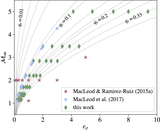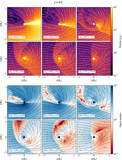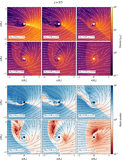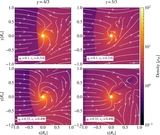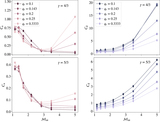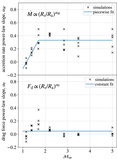Image Details
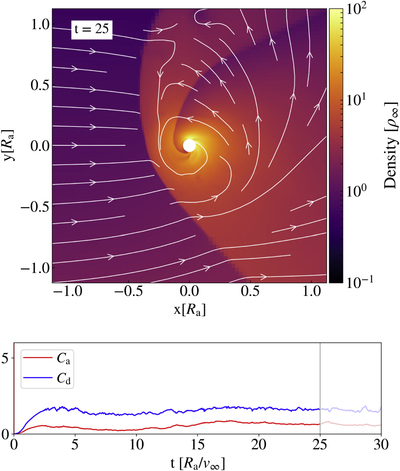
Caption: Figure 3.
Movie of a simulation showing flow of material in the vicinity of an object, embedded in the envelope of its companion star during a common envelope interaction. The simulation has been performed with ideal gas equation of state adiabatic constant γ = 4/3, mass ratio qr = 0.1, and upstream Mach number ﹩{{ \mathcal M }}_{\infty }=1.69﹩ in the “wind tunnel” setup. The top panel shows the density in units of ﹩{\rho }_{\infty }﹩ in the orbital (x–y) plane of the binary, with the white circle at the coordinate origin representing the embedded companion object. The lines with arrowheads in white represent streamlines following the velocity field in the flow. Material enters into the domain from the −x direction, and the coefficient of accretion Ca and the coefficient of drag Cd values are measured in response to the incoming conditions. Supersonic flow of material past the object results in a large pressure difference, causing formation of a shock wave. The bottom panel shows the time series of coefficients of accretion Ca (in red) and drag Cd (blue) for the full simulation. The gray vertical line tracks the instantaneous Ca, Cd values as the simulation progresses. The time quoted in the movie is in code units ﹩{R}_{{\rm{a}}}/{v}_{\infty }﹩, where Ra is the accretion radius and ﹩{v}_{\infty }﹩ is the relative velocity of the flow past the embedded object.
(An animation of this figure is available.)
The video/animation of this figure is available in the online journal.
Copyright and Terms & Conditions
© 2020. The American Astronomical Society. All rights reserved.



